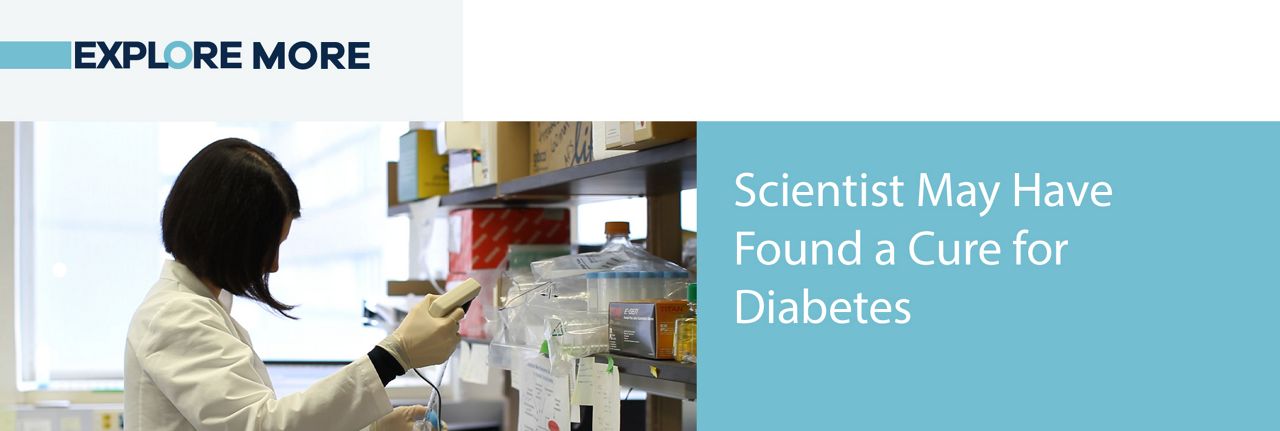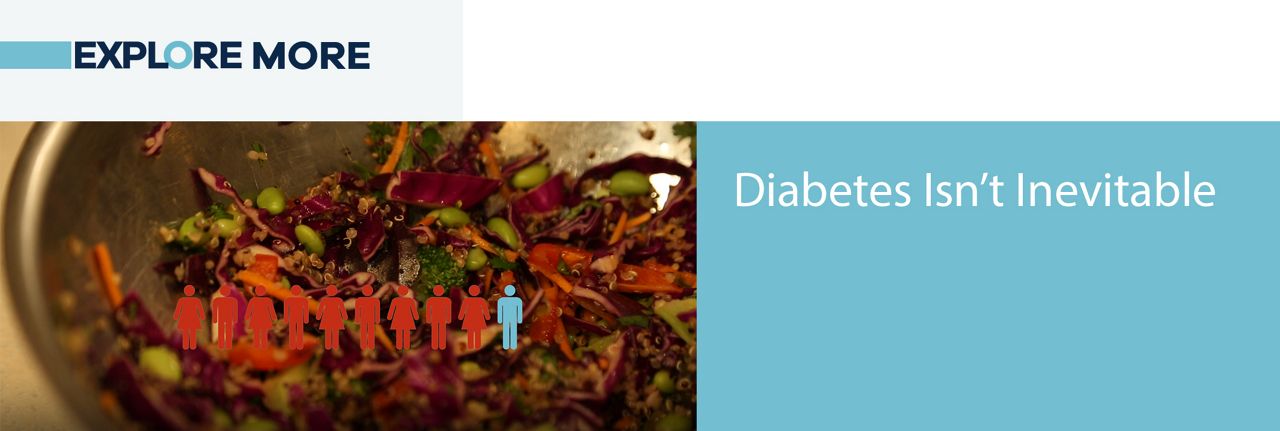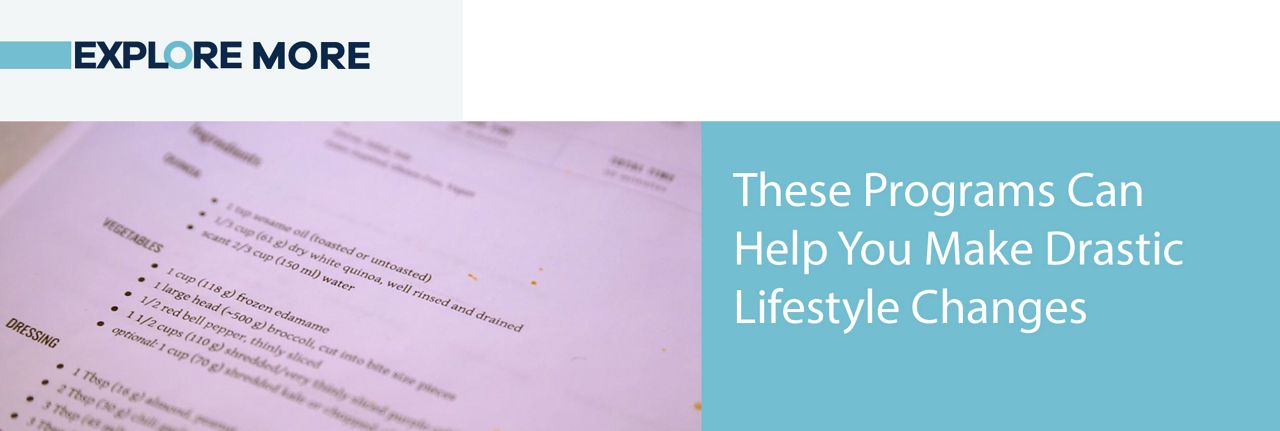José Acuña was told he had diabetes years before he started feeling its effects. When doctors told him he needed to change his eating habits and exercise more, he ignored the instructions. “It was the worst decision I ever made in my life, was not listening to that doctor then,” said Acuna.
He is one of more than 30 million Americans living with diabetes. The Centers for Disease Control says an estimated 84 million people have prediabetes. The growing number of people with diabetes is directly linked to the growing number of Americans with obesity. Nearly 40 percent of the population is considered obese, that’s up from 30.5 percent in 2000.
“There are two kinds of diabetes, type 1 and type 2. The real epidemic, is type 2,” said Dr. Jaime Uribarri. A nephrologist at Mount Sinai hospital, Uribarri also leads its Home Dialysis Program. He says diabetes “is a disease resulting from lifestyle problems, people who don't eat well, people who don't exercise, and they go through life without paying attention to that.”
Uribarri says diabetes is a problem that is often linked to a person’s socioeconomic status. “If you go to any community, where the majority of the people are lower income, you go to a supermarket and you cannot get healthy food.”
DIABETES IN YOUR COMMUNITY
According to the 2018 State of Obesity report released by The Trust for American’s Health and the Robert Wood Johnson foundation, a third of adults in Texas are considered obese, and 11.9 percent have diabetes. The foundation has put together a diabetes ranking by state and Texas ranks number 10 in the country for diabetes prevalence.
WHAT UNCHECKED DIABETES CAN LOOK LIKE…
Uncontrolled sugar in the blood can damage blood vessels, organs, and for many, lead to kidney failure. This happens to 30 percent of diabetics. With not enough kidneys available to transplant, many diabetics end up on dialysis, which helps do the job the kidneys no longer can; removing waste, salt and extra water from the blood. Dialysis also helps the body regulate chemical levels in the body, like potassium and sodium. Patients can choose to go to a hospital several times a week, or they can do it at home, like José does.
It is a labor of love at the Acuña’s home, where José’s wife Kate is his caretaker. Their second bedroom has become a storage room of sorts, for all of the medical supplies. They chose to do his dialysis at home because it is more convenient, he’s treated while he sleeps every night, allowing him to function better during the day.
“I can sit here and talk to you with a clear mind. Where, at one point, I was just in such a fog and physically, just not here. Oh, this thing has cleaned up a lot of the toxins. I know it has. Who knows, I might be able to play basketball soon,” said Acuña.
468,000 Americans are being kept alive on dialysis. Diabetics make up the largest percentage of those patients. Dialysis is a band-aid solution though–what’s needed is a cure, and scientists are closer now than ever before to finding one.
IS THERE A CURE FOR DIABETES?
At Mount Sinai Hospital’s Diabetes, Obesity and Metabolism Institute, researchers are focused on insulin producing beta cells, found within the pancreas. People with diabetes, don’t have enough of these beta cells. The Institute’s director, Dr. Andrew Stewart and his team may have found a way to teach a diabetic pancreas how to once again grow beta cells.
Their research is published in the journal Cell Metabolism, where they explain that they were able to fix insulin production by combining two known drugs, one from a molecule found in plants called harmine that makes beta cells replicate, the other, shuts off signaling molecules – allowing the beta cells to multiply even faster. But so far, it has only been proven in the lab.
Mount Sinai researchers aren’t the only ones working on a cure; transplantation of a new pancreas or beta cells is a way to essentially cure diabetes – but it cannot be done on a wide scale. Other researchers are using stem cells to grow beta cells. Stewart says his team's method could eventually be replicated broadly, because the drugs they are using are already available. “I don't want to raise false hopes,” said Stewart, “but I would also say that this has legs. This is going to happen.”
In theory, a cure that corrects insulin production would change the trajectory for diabetes patients, offering millions a fresh start, but it’s only part of the solution to end the crisis. Stewart says a greater, more holistic approach is needed to beat the diabetes epidemic.
“A pill that we develop that helps you make more insulin, also helps you gain weight, right. So if you gain more weight,” says Stewart, “you may well get diabetes again. So our pill would not be the final answer, probably.” Stewart is basically saying there isn’t going to be a quick fix. We have to change how we eat.
PREVENTING DIABETES
In 2002, the landmark Diabetes Prevention Program study was published. It centered on the lifestyle changes of 3,234 people with pre-diabetes. The group of participants charged with eating healthier diets and regular exercise was able to reduce their risk of getting diabetes by 58 percent.
There is also a growing number of people with full-blown diabetes that have been able to completely reverse it by changing their daily habits. It is something Jim Harris, of Sebring, Florida, is trying to do. He has high cholesterol and a blood test revealed his A1C–a measure of the level of sugar in his blood–was out of control. He was diagnosed with type 2 diabetes.
In 2016, Jim and his wife Dorothy Harris joined the Complete Health Improvement Program (CHIP), offered through their local hospital system, AdventHealth. CHIP calls for 30 minutes of walking a day, but the main focus is diet.
Through the program the Harrises learned better meal planning, giving them quick access to a healthy meal when they return home from work. Before, Jim says he would snack during the time it would take to prepare their dinner. “Everything was fair game from sugar, a lot of sugar and just bad eating you know.”
CHIP centers around a plant-based diet, so no meat. More than 60,000 people have gone through the program, many achieving a reversal in chronic diseases. While Jim was diligently following the program, his A1C dropped from nearly seven to just over six. A normal blood sugar range is an A1C of four to 5 percent. Someone with Type 2 diabetes has an A1C of 6.5 or higher. Jim almost had his diabetes completely under control.
“I didn't realize how bad I felt until I was feeling better from not eating the fats, not eating all the sugars and things like that,” said Jim, “I felt run down, felt tired, overweight, just kind of - blagh.” He noticed he had more energy when he ate healthier foods and exercised.
The Harrises made the lifestyle changes with the help of community. Their CHIP curriculum included group cooking and educational sessions lead by AdventHealth nurse and certified diabetes educator, Brenda Garza. She says a big part of the program is changing how you view food, to her, it’s medicine. “The colors in foods, there's phytochemicals, there are antioxidants in foods. They prevent cancer, they help with heart disease, they help to keep your arteries clean.”
Life started to get hectic for the Harrises, and Jim found it increasingly more difficult to eat healthy, so his blood sugar crept back up. He says it showed him that changes to his diet needed to be consistent if he truly wanted to live a healthy life.
“I'm on cholesterol medication, I'm on the blood pressure medication–on metformin for diabetes. So hopefully as I get my numbers down, and the doctor feels confident enough,” said Jim, “that they can take it off.”
Dorothy is right along there with Jim, she sees the lifestyle changes as an investment in their future. “I love him. And so, you want to have a good long life,” said Dorothy. “You can't change your genetics. We're all dealt what we're dealt. But there are so many things that you can change by simple lifestyle tweaks that can ensure that you have a long, healthy life. That you can do the things you want to do. I want him to be with me to do these things. We want to be here whenever we have grandchildren. We want to be able to travel. We want to be able to enjoy life. And the only way you can do that is to guard your health.”







